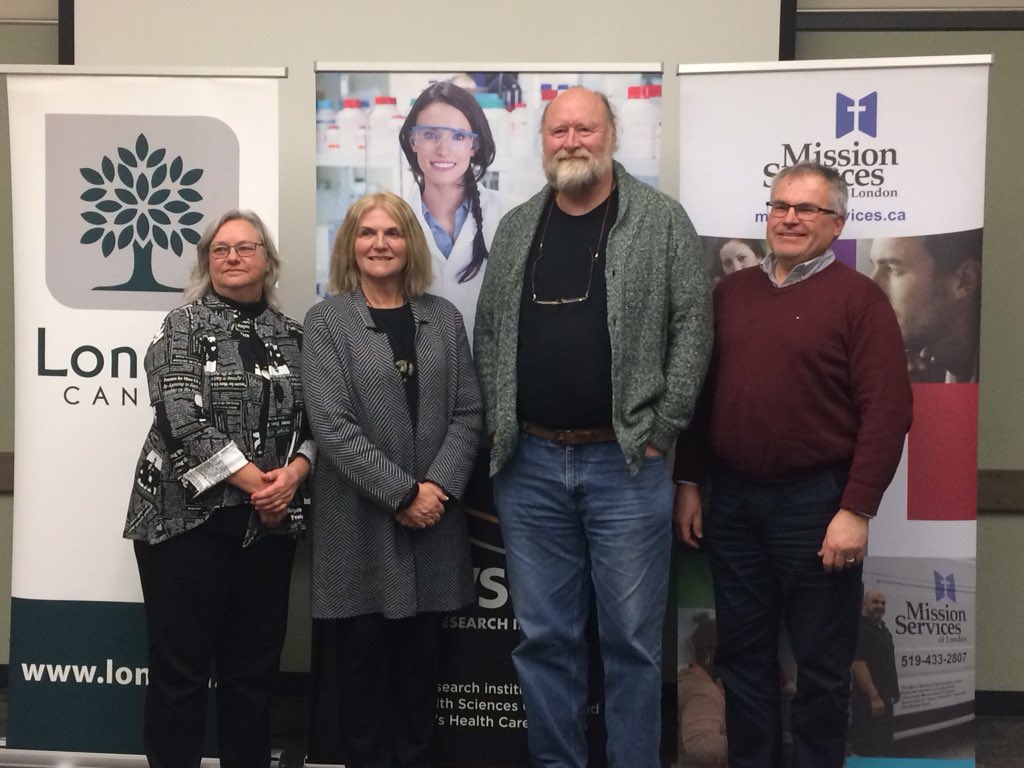A pilot project that aims to divert families from accessing homeless shelters in London is seeing great success.

Rather than just telling families faced with homelessness to come down to the shelter, the project at Rotholme Women’s and Family Shelter looks at what can be done to keep the families where they are or help them move somewhere else.
“Let’s say someone’s given an eviction notice for a week. In some cases, our housing crisis worker would negotiate with the landlord and ask if they could give the family another couple of weeks because we felt we could find housing if we had that extra period. Very often the landlords were co-operative,” said Cheryl Forchuk, assistant scientific director at Lawson Health Research Institute.
Once the family had stable housing, interviews were held about every six months to measure housing stability, quality of life, and other health indicators.
Lawson partnered with Western University, the City of London and Mission Services London to evaluate the project which followed 20 families. They released the results during a meeting in the Stevenson and Hunt Room at the central branch of the London Public Library on Monday.
“So in following them for 18 months, we were able to stay in contact with 90 per cent of families in the study — we lost touch with 10 per cent — but of the 90 percent, all of them remained housed for that 18 months,” said Forchuk.
“We didn’t just delay homelessness, we prevented it.”

Get daily National news
The pilot was aimed at families facing homelessness because, as Forchuk says, among all groups of the homeless, families are one of the few that call ahead when accessing the shelter.
By calling ahead, the shelter can actually intervene to keep the family from becoming homeless, but if they decide to just show up, Forchuk says it becomes more difficult.
“Once families have left their homes and belongings, it is very difficult to escape homelessness,” she said.
The study also looked at those who did not access the diversion service to see why is it that some people, instead of calling ahead, just showed up at the door.
During focus groups, Forchuk says people talked about already having a number of life challenges, particularly mental health issues and low income, but Forchuk says two issues coupled together are forcing families to leave their homes.
“When they had difficulty with conflict and they didn’t understand the system or how to deal with it, moving the family into homelessness was what they saw as the only solution as an escape from that extreme discomfort,” she said.
Forchuk said conflicts can range from problems within the family dynamic, to issues with a landlord, and even to challenges with their children’s schools.
Right now, the project only works if families call ahead and the shelter has time to find alternative housing options.
An emergency shelter is not the best place for that early intervention to happen, said Gordon Russell, director of shelters for Mission Services London.
“If you’re calling an emergency shelter, you’re at a point where you have to leave your current housing, but if you could find a place or a connection earlier than that when things start to develop, that would be better,” he said.
One possible solution is creating community hubs.
“Then within those hubs, we create an advertised prompted service where, if a family or an individual feels there’s something happening that may endanger their housing, they can call the hub,” said Russell.
He went on to explain the hub would be an early intervention point and would provide those services that the shelter is providing now.
“Maybe if we had several of those throughout the city, there would be an opportunity to get to the issue earlier,” said Russell.
While right now, the project focuses on families facing homelessness, there’s hope it could extend to individuals.
“We want to divert everyone from shelters. It’s just a question of what is the right model for the group,” said Russell.
For example, most males are not calling in advance when accessing an emergency shelter. They often show up at the door and say, ‘I have no place to stay right now,’ Russell explained.
“Your ability to divert is almost nil.”
Russell believes aggressive diversion practices based at community hubs, as opposed to emergency shelters, is the way forward.
The project was supported by a $134,000 Local Poverty Reduction Fund grant, administered by the Ontario Trillium Foundation on behalf of the Ontario Government.
The grant is helping groups disproportionately affected by poverty get into housing, develop skills and find employment in London.












Comments